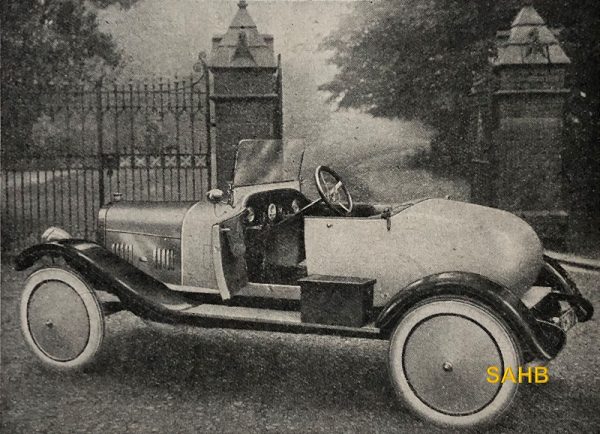
The Calthorpe company made light cars that were far better than the norm. Their origins lay in the manufacture of bicycles, and they also made motorcycles until 1938, long after car production had ceased.
The company was formed in the 1890s in Birmingham as Hands and Cake, run by George W Hands. The name changed several times until in 1901 it evolved into the Calthorpe Motor Co. Ltd. After a serious fire in 1905 the company moved to new premises, and the name changed again in 1912 to Calthorpe Motor Co (1912) Ltd – still with Hands as one of the directors.
The first motor car, a 10hp four-cylinder, was announced in 1904. Some or all of the engines were made by Johnson, Hurley and Martin Ltd in Coventry until about 1909. The larger 16-20 Calthorpe was launched in 1907 and did very well in reliability trials and other events in 1907 and 1908.
Although they made a few larger models, Calthorpe specialised in light cars, from around 1910 powered by engines from White & Poppe, and raced them with some success in the French Coupe de l’Auto series.
In 1913 Calthorpe revealed an important car for the company: the 10/12 Minor. It had the company’s own engine (a side-valve four-cylinder of 1098cc capacity), a 3-speed gearbox and shaft drive. This was a proper large car in miniature. Bodies were mostly by Mulliners in Birmingham (whose factory was next door) and were a cut above the competition, despite a cost of £168 for a complete 2-seater car that was lower than comparable machines from Calcott, Morris or Singer. Calthorpe purchased Mulliners in 1917.
After manufacturing mines and grenades in World War I Calthorpe returned to car production in 1919 with the 10.4, with an engine enlarged to 1260cc. It is almost certainly this model that appears in our Snapshot. By this time prices were considerably higher than those from rivals such as Morris, and production stagnated at a figure no higher than about 40 cars a week.
The car was also available with a higher-performance engine, with Ricardo alloy pistons and high-lift camshaft. Although fewer than 10 Calthorpes of any model remain today, a 1920 example of one of these “Super Sports” versions survives. Originally owned by a wealthy Stockport family and subsequently by their gardener from 1925, it was photographed by The Autocar in 1920 at Shelsley Walsh. A 15-year restoration started in 1976 and the car campaigned in vintage racing from 1994. It is reportedly capable of cruising at around 60mph.
The days of the high-quality light car were coming to an end by the mid-1920s, and Calthorpe’s sales steadily declined. The company went into receivership in 1924, and sales of the remaining stocks of cars had virtually ceased by 1928.
Image courtesy of The Richard Roberts Archive: www.richardrobertsarchive.org.uk







Leave a Comment